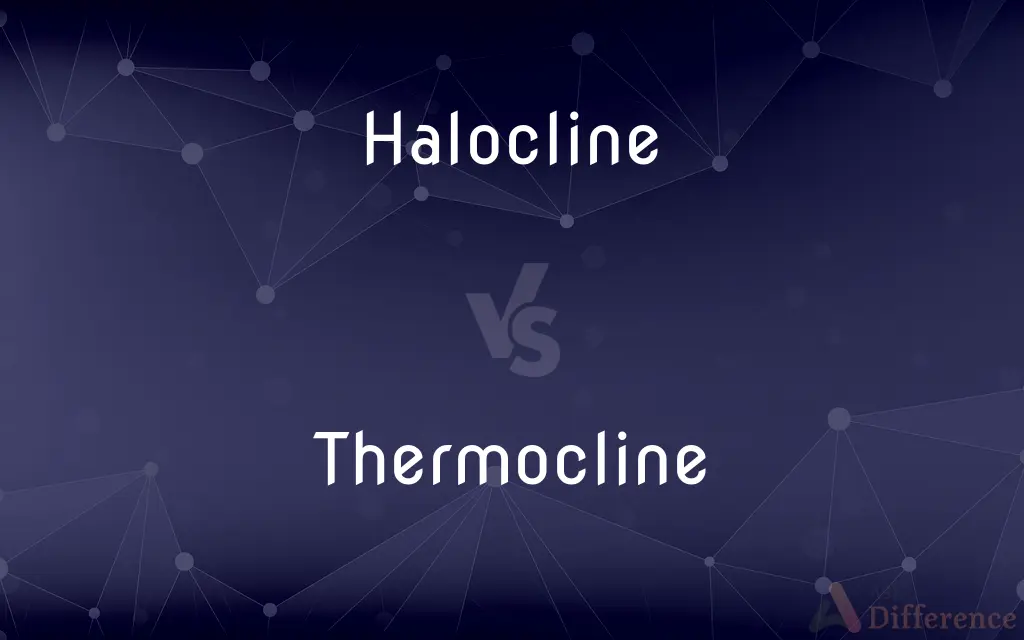Halocline vs. Thermocline — What's the Difference?

Difference Between Halocline and Thermocline
ADVERTISEMENT
Compare with Definitions
Halocline
In oceanography, a halocline (from Greek hals, halos 'salt' and klinein 'to slope') is a cline, a subtype of chemocline caused by a strong, vertical salinity gradient within a body of water. Because salinity (in concert with temperature) affects the density of seawater, it can play a role in its vertical stratification.
Thermocline
A thermocline (also known as the thermal layer or the metalimnion in lakes) is a thin but distinct layer in a large body of fluid (e.g. water, as in an ocean or lake; or air, e.g.
Halocline
An intermediate layer of oceanic water in which salinity increases more rapidly with depth than in the layers above and below it.
Thermocline
An intermediate layer of oceanic water in which temperature decreases more rapidly with depth than in the layers above and below it.
Halocline
A strong, vertical salinity gradient; the (sometimes indistinct) border between layers of water that contain different amounts of salt
ADVERTISEMENT
Thermocline
A layer in a large body of water, such as a lake, that sharply separates regions differing in temperature, so that the temperature gradient across the layer is abrupt.
Thermocline
(geography) A layer within a body of water or air where the temperature changes rapidly with depth.
Share Your Discovery

Previous Comparison
Reverence vs. Awe
Next Comparison
Command vs. Imperative














































